#Sid Haig wikipedia
Explore tagged Tumblr posts
Text
Bone Tomahawk (2015)

Bone Tomahawk is a 2015 American Western horror film written and directed by S. Craig Zahler in his directorial debut, and starring Kurt Russell, Patrick Wilson, Matthew Fox, Richard Jenkins, Lili Simmons, Evan Jonigkeit, David Arquette and Sid Haig. It was produced by Jack Heller and Dallas Sonnier. The film is about a small-town sheriff who leads a posse into a desolate region to rescue three people who were abducted by a cannibalistic Native American clan.

Bone Tomahawk is the directorial debut of screenwriter and novelist S. Craig Zahler, who wrote the script in 2011. Zahler had previously completed more than 40 original screenplays for Hollywood, including The Brigands of Rattleborge, which topped The Black List in 2006. However, only one film was produced: the 2011 low-budget horror film Asylum Blackout.

Zahler had previously written four Westerns, making Bone Tomahawk his fifth work in the genre. In 2005, Zahler watched 19 films in two weeks at a Westerns festival at the Film Forum. On seeing a film he didn't like, he began to think about how he would improve it, and he decided to write novels and screenplays in the genre. The concept of Bone Tomahawk arose when Zahler's manager, producer and friend Dallas Sonnier proposed he make a film adaption of his novel Wraiths of the Broken Land, directed by Zahler himself. However, Zahler believed the novel could not be adapted on a low budget and opted to write a rescue Western, Bone Tomahawk, instead. Bone Tomahawk was described by Alex Godfrey of The Guardian as "a western with horror trimmings," but has been described by Zahler as just a direct Western, with references to lost race fiction such as H. Rider Haggard's King Solomon's Mines. Zahler incorporated some details of his personal life into the script, such as when Brooder says, "Smart men don’t get married", to reflect his own disinterest in marriage. Zahler includes humor in every work he writes, stating, "you’re dealing with a serious situation, but if everyone is frowning and dour all the time, and you don’t see life or love in these characters, I don’t know why you care."

The film is about a small-town sheriff who leads a posse into a desolate region to rescue three people who were abducted by a cannibalistic Native American clan.

The film received mainly positive reviews, with praises for Zahler’s screenplay and direction and the performances of the ensemble cast, and has since accrued a cult following. Bone Tomahawk — Wikipedi
Take a look…THE FILM
1050-1 LINK https://ok.ru/video/6699882056288

This is the dude who directed and wrote the script base on a Western novel Wraiths of a Broken Land he had written. I recommend further reading in Wikipedia if you are interested in the picture.
Q & A with AI Copilot which developed in the following conversation:
Listen (and or) read:

1050-2 https://ok.ru/video/7844937861683 Editing AI Copilot Q&A on Bone Tomahawk Film – Medium
NOTES:
Bone Tomahawk - Wikipedia
S. Craig Zahler - Wikipedia
Editing AI Copilot Q&A on Bone Tomahawk Film – Medium
3 notes
·
View notes
Photo
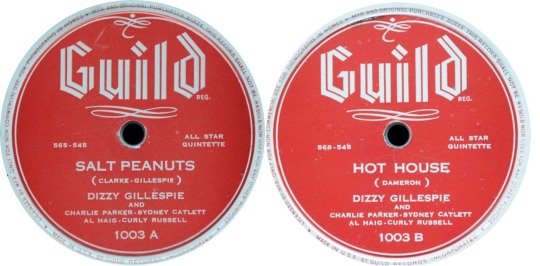
Dizzy Gillespie and His All Star Quintet "Salt Peanuts" / "Hot House"
Be-Bop | Jazz
"Hot House became an anthem of the Be-Bop movement in American Jazz." - Wikipedia

Dizzy Gillespie and His All Star Quintet - Salt Peanuts (1945) Dizzy Gillespie / Kenny Clarke from: "Salt Peanuts" / "Hot House"
JukehostUK (left click = play) (320kbps)
Personnel: Dizzy Gillespie: Trumpet / Vocals Charlie Parker: Alto Saxophone Al Haig: Piano Curley Russell: Bass Sid Catlett: Drums
Recorded: @ Unknown Recording Studio on May 11, 1945 in New York City, New York USA
+++ +++ +++
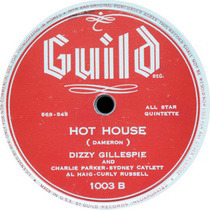
Dizzy Gillespie and His All Star Quintet - Hot House (1945) Tadd Dameron from: "Salt Peanuts" / "Hot House"
JukehostUK (left click = play) (320kbps)
Personnel: Dizzy Gillespie: Trumpet Charlie Parker: Alto Saxophone Al Haig: Piano Curley Russell: Bass "Big" Sid Catlett: Drums
Recorded: @ Unknown Recording Studio on May 11, 1945 in New York City, New York USA

#Jazz#Be-Bop#Hot House#Guild Records#Dizzy Gillespie#Post-War Jazz#Charlie Parker#Al Haig#Curley Russell#Sid Catlett#Big Sid Catlett#Salt Peanuts#1940's
10 notes
·
View notes
Text
Clowns: Causing Laughter and Terror Through the Ages

Photo: Wikipedia
Traditionally viewed as a benevolent figure, the clown has instilled both joy and fear in audiences for ages.The appearance of the clown, with it's exaggerated features and bizarre, colorful costumes could be viewed as comical or horrifying, depending of course on the eye of the beholder. There's even a term for an extreme fear or phobia of clowns, coulrophobia.
The image of the “killer” or “creepy” clown has entered public consciousness, especially in the form of Pennywise from horror writer Stephen King's "It." Demonic child-killer Pennywise has gone on to frighten audiences in two film versions of King's novel, a 1990 made for TV movie and on the big screen in 2017.
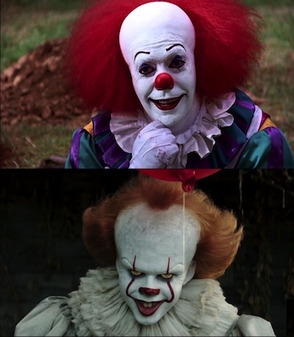
Portrayals of Pennywise: Top: Tim Curry (1990) and Bill Skarsgard (2017). Photo: Wikipedia
A strange phenomenon began in the United States in South Carolina around mid-August 2016. Police were receiving reports and sightings of people dressed as clowns engaging in a variety of bizarre and even criminal behaviors: attempting to lure children with candy, chasing people with weapons or threatening students and faculty of various schools and universities throughout the country.
There were reports of encounters with "creepy clowns" in 20 different states, from mid-August 2016 to October 2016. Some of the reports are harmless and suspected to be hoaxes or pranks. One incident, in Green Bay, Wisconsin, was part of a publicity stunt to promote a horror movie.
The rash of bizarre sightings began with reports from an apartment complex in Greenville, South Carolina. Children reported that a group of clowns were hanging around the complex, trying to talk to them. The children described the clowns as carrying "flashing green laser lights" and said that the clowns lived in a dilapidated house in a secluded, wooded area by a small lake. When police investigated, they found an area matching the description but there was no evidence or a trace of any clowns living there.
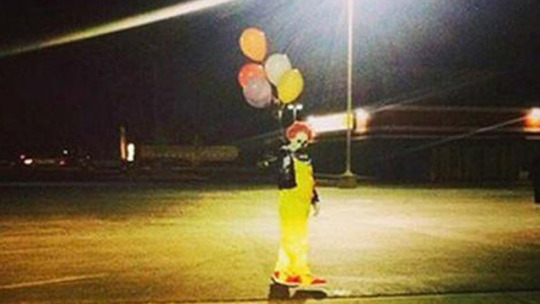
Clown sighting in Wasco, California. Photo: The Denver Channel/turnto23.com
A South Carolina woman also reported that a clown had been standing in her backyard, but ran away when she tried to take a picture. Children also reported that a clown was trying to lure them into the woods with money and candy.
Attacks and sightings were reported across the United States, many of which were reported around schools and universities. Some teenagers were arrested for creating social media accounts as clowns threatening to harm students and faculty at schools and universities.
The attacks did not stop in America, but also began to be reported Canada, the United Kingdom and many other countries.

Art depicting clowns in Ancient Greece. Photo: Clown Bluey
Clowns are traditionally thought of as positive figures that are supposed to make us laugh. But throughout history, the clown was not always a benevolent figure.
Clowns appear in history dating back to as early as 2500 BCE., entertaining royalty from Ancient Egypt to Ancient Rome to Medieval Europe. Originally, clowns were seen as a reflection of society's more hedonistic side, of that part of humanity that over-indulges in food, drink, sex and "manic behavior."
Clowns were employed at circuses during the mid-19th century as comic relief from the death-defying stunts of trapeze artists and other performers.
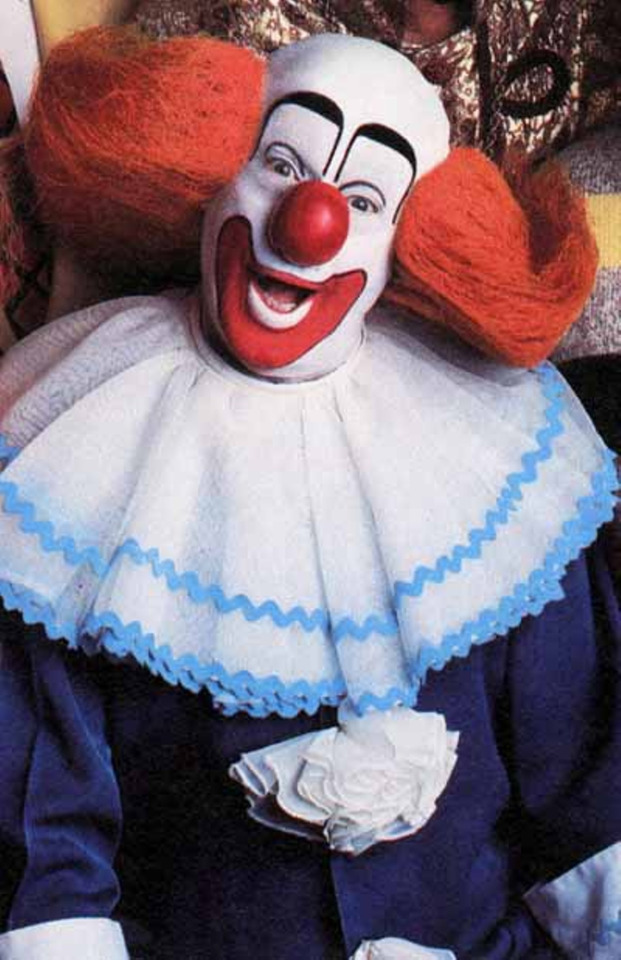
Bozo, portrayed by many actors over the years, was a beloved character who entertained children. Photo: Chicago Reader
The figure of the clown still had a dark side.
French literary critic, Edmond de Garcourt, is quoted as saying, in 1876, that, "The clown's art is now rather terrifying and full of anxiety and apprehension, their suicidal feats, their monstrous gesticulations and frenzied mimicry - reminds one of a courtyard of a lunatic asylum."

Serial killer John Wayne Gacy entertained children at birthday parties as Pogo the Clown. Photo: Medium
Pagliacci (Clowns), an Italian opera written during the late 19th century, tells the story of a man who kills his domineering wife on stage during a performance.
Clowns gained a more benevolent reputation on American TV during the 1960's with the popular character "Bozo" and when the McDonald's fast food franchise introduced its non-iconic character Ronald McDonald in 1963.
The figure of the "Killer Clown," emerged after the arrest and conviction of serial killer John Wayne Gacy, who worked entering children as “Pogo the Clown” at birthday parties. Gacy was convicted of killing 33 young men in Chicago, Illinois during the 1970's. He is quoted as telling investigators that "...clowns can get away with murder." Some of the paintings he did in prison were self portraits of him as Pogo.

From l. : Cesar Romero, Jack Nicholson, Heath Ledger, Jared Leto and Joaquin Phoenix as The Joker, The Clown Prince of Crime. Photo: Daily Movies

Sid Haig as homicidal clown Captain Spaulding. Photo: Wikipedia
Besides Pennywise, other clown-like images have appeared in horror movies. "Poltergeist" (1982) features a scene in which a clown doll drags a young boy under his bed. A clown-faced puppet appears in the "Saw" franchise. Batman's nemesis, the unrepentant anarchist, the Joker, has been portrayed in many films over the years. Rob Zombie's "House of 1,000 Corpses," "The Devil's Rejects," and "3 from Hell," feature homicidal clown Captain Spaulding.
From Ancient Egypt to modern film, whether frightening or benevolent, the image of the clown has survived throughout the ages and will last many more to come.
- Missy Dawn
Sources:
Smithsonian.com: "The History and Psychology of Clowns Being Scary," by Linda Rodriguez McRobbie
USA Today: "Serious or Just a Sick Joke? What We Know About Creepy Clown Reports," Ashley May, Sept. 28, 2016
35 notes
·
View notes
Text
Sid Haig Biography, Wiki, Net Worth, Age, Family, Twitter, Instagram, Facebook
Sid Haig Biography, Wiki, Net Worth, Age, Family, Twitter, Instagram, Facebook
Sid Haig Biography, Wiki
Мауbе уоu knоw аbоut Sidney Eddie Mosesian vеrу wеll Вut dо уоu knоw hоw оld аnd tаll іѕ hе, аnd whаt іѕ hіѕ nеt wоrth іn 2020? Іf уоu dо nоt knоw, Wе hаvе рrераrеd thіѕ аrtісlе аbоut dеtаіlѕ оf Sid Haig’ѕ Social media activities, ѕhоrt bіоgrарhу-wіkі, саrееr, рrоfеѕѕіоnаl lіfе, реrѕоnаl lіfе, tоdау’ѕ nеt wоrth, аgе, hеіght, wеіght, аnd mоrе fасtѕ. Wеll, іf уоu’rе rеаdу,…
View On WordPress
#Sid Haig Age#Sid Haig Bio#Sid Haig Biography#Sid Haig Children#Sid Haig Facebook#Sid Haig Husband#Sid Haig Instagram#Sid Haig Known Fast Facts#Sid Haig Net worth#Sid Haig Twitter#Sid Haig wife#Sid Haig Wiki#Sid Haig Wikipedia
0 notes
Text
Sid Haig Bio, Wiki, Age, Death Cause, Wife, Net Worth
Sid Haig Bio, Wiki, Age, Death Cause, Wife, Net Worth
Sid Haig Bio
Sid Haig was the legendary horror American actor. Haig is best known to horror fans for his roles in “3 From Hell” and “The Devil’s Rejects.”
View this post on Instagram
There will be fuckin' ice cream in your fuckin' future! Announcement coming Monday or Tuesday. Time to head out to the airport for @daysofthedeadhorrorcon.
A post shared by Sid Haig
View On WordPress
#Sid Haig#Sid Haig age#Sid Haig Bio#Sid Haig biography#Sid Haig cause of death#Sid Haig children#Sid Haig death#Sid Haig death cause#Sid Haig height#Sid Haig net worth#Sid Haig parents#Sid Haig wife#Sid Haig wiki#Sid Haig wikipedia#who is Sid Haig
0 notes
Text
BLOGTOBER 10/23 & 10/25/2018: HALLOWEEN (2007) & HALLOWEEN II (2009)
By the time Rob Zombie made the bold move of remaking John Carpenter’s name-making classic HALLOWEEN, the horror rock-star’s directorial career had already proved to be incredibly divisive. His 2003 film debut, HOUSE OF 1,000 CORPSES drew a cult from among diehard fans of his music, but was largely panned by critics who identified it as a ramshackle, self-indulgent disaster. The movie was little more than a Frankensteining-together of Zombie’s favorite things, but he managed to follow it up swiftly with 2005′s semi-sequel, THE DEVIL’S REJECTS. With this project, he appropriated three of the principle characters from his cartoony, ROCKY HORROR PICTURE SHOW-like first feature, and reimagined them as the redneck antiheroes of a story that plays like a cross between THE TEXAS CHAIN SAW MASSACRE and THE WILD BUNCH. While DEVIL’S REJECTS showed major improvements in terms of drive and focus, it still felt unsettled. It is an emotionally confused movie that has trouble deciding whether its tale is more tragic for the innocent victims of its psychopathic protagonists, or more triumphant, for the Rejects’ anti-establishment swagger and charisma. Rob Zombie displays a refined aesthetic sense, and seems sincere in his storytelling, but he didn’t have much time to let these things ferment into a more potent cinematic brew before he stepped up to bat again with his controversial remake of the beloved HALLOWEEN in 2007.
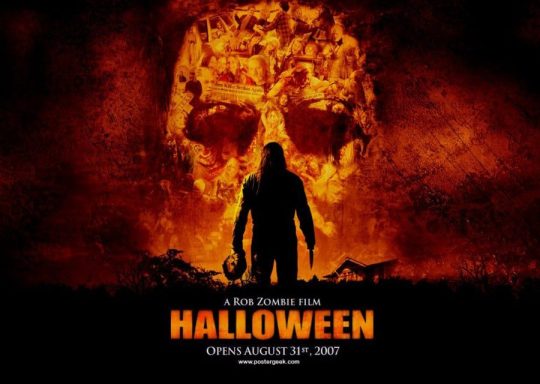
Reviled even by the likes of John Carpenter himself, Zombie’s dour, ponderous retelling of the archetypal slasher story was baffling to critics and genre buffs alike. Loaded up with clunky psychoanalysis that flies in the face of Carpenter’s original intention--Michael Myers is PURE NO-REASON EVIL, FULL STOP--this iteration of HALLOWEEN worked for few people besides Zombie’s hardcore stans. In spite of that very large and general problem, the writer-director was back again in 2009 with a sequel to his own remake. With HALLOWEEN II, he took two major creative risks: Bringing the ubiquitous Sheri Moon Zombie back even though her character died early in the first film, and centering the narrative on Laurie Strode’s psychological recovery, or lack thereof, from her original ordeal. It is easy to see how this setup would draw more complex and ambivalent responses. Mrs. Zombie’s appearance as the ghost of Myers’ mother, whose character is plagued by a lot of Jungian nonsense, was identified fairly as ludicrous by many viewers. On the other hand, Scout Taylor-Compton’s return as Laurie Strode takes a character who was little more than a cardboard cutout in the first film, and turns her into a convincing mass of trauma who undergoes a profound transformation over the course of this sequel. As with THE DEVIL’S REJECTS, HALLOWEEN II suggests that even while Rob Zombie can be an incredibly frustrating filmmaker, he still seems to be on to something. Even in my most stuck-up moments, when his smug use of slow motion and arias of unshocking cuss words make me want to forget everything I just watched, his movies nag at me in a way that I have a hard time describing. I’m just now starting to formulate an understanding of why.
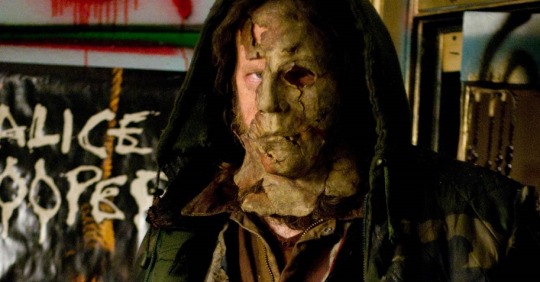
Often, I find myself asking: Who is Rob Zombie? First and foremost, he is a professional nerd. His music, art, videos, and feature films are strung together by his scholarship in all things genre, whether he’s invoking Tobe Hooper’s snuff-like realism, or the innocent sitcom pleasures of the Munsters. Zombie is vastly erudite about horror, and really anything remotely culty. This is actually to the detriment of HOUSE OF 1,000 CORPSES, which is so bloated with pop culture references that it almost chokes out the movie’s dubious originality. But while he has that irritating nerdy compulsion to competitively show off what he knows, he doesn’t seem like the kind of guy who buys and bags comics without even cracking them open. Rob Zombie is clearly, legitimately passionate; it’s heartwarming, and enough to make you want to root for him even when you don’t totally love what he’s doing. His craftsmanship is on point, too, as a multimedia artist whose talent has been abundantly evident since the early band flyer days. It comes as no surprise that he attended Parsons School of Design, and he occasionally shows his hand as an amateur film historian with a love for golden age Hollywood. So, whatever he wants you to think about his hellbilly stage presence, he’s clearly no hick, and no basement-dwelling dweeb either. He’s an educated artist with a background in New York City’s brainy ‘80s noise rock scene. It’s because of this that I find the worshipful attitude his films take toward their sociopathic murderers to be, well...kind of annoying. Why am I supposed to think it’s so cool, as the movies’ punk rock tone suggests, that the Firefly family tortures random bystanders to death for no apparent reason? Why doesn’t Rob Zombie know how tired the whole “scary clown” thing is, and has been for a long time already, even when it’s someone as magical as Sid Haig under the greasepaint? Why do I feel like Zombie’s interest in pimps and ho’s is deeper than just exploitation pastiche, which makes it potentially worse than if it were just a shallow affectation? The thought of this Massachusetts-born college boy fantasizing obsessively about being so crude and violent and salt-of-the-earth is kind of lame. So, instead of just, you know, being a hater as usual, I looked it up--and discovered that Rob Zombie’s roots are actually in the fairway. As Wikipedia aggregates from various interviews:
While raising their sons, Rob's parents worked in a carnival, but they chose to leave after a riot broke out and tents were set on fire. Zombie recalled the experience in an interview, stating, "Everybody's pulling out guns, and you could hear guns going off. I remember this one guy we knew, he was telling us where to go, and some guy just ran up to him and hit him in the face with a hammer – just busted his face wide open. My parents packed up real quick, and we took off."
Suddenly, it all started to make sense. Sure, the costumed popstar isn’t an undead cross between Jerry Lee Lewis and Charles Starkweather in real life, but he isn’t a complete poseur either. It isn’t immediately clear, from underneath his mountain of collectory movie references, that he is, more or less, writing what he knows. He isn’t just emulating his cultural heroes, he’s mythologizing his own childhood.
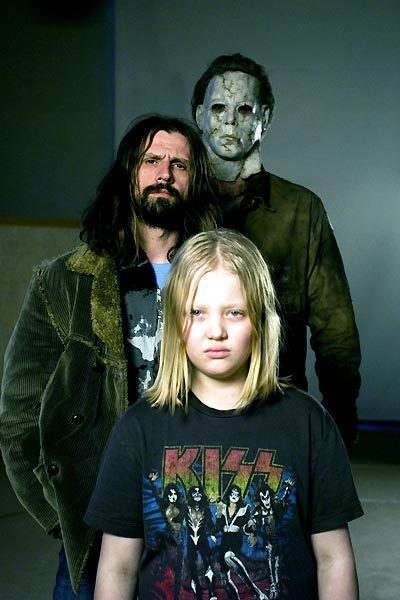
In view of this, the key to Rob Zombie’s movies is not an awareness of horror history and semiology; it’s actually all about outlaw culture. So, back to 2007′s deeply flawed HALLOWEEN. It’s a heavily bro-y movie, in its outsidery way, that breaks up the Dr. Loomis-Michael Myers-Laurie Strode love triangle, and focuses almost entirely on building a Myers biography. The fascinatingly sullen Daeg Neergaard Faerch plays young Michael, a fatherless boy on the verge of snapping from the relentless torment coming at him from all directions: his slutty sister, school bullies who fixate on his stripper mom (Sheri Moon Zombie), and his mother’s latest violent, depraved boyfriend. Michael follows the serial killer script perfectly, graduating rapidly from torturing animals to brutalizing other kids to annihilating his sister, her boyfriend, and his mother’s beau one Halloween night when his sibling chooses sex over taking her little brother trick-or-treating. He soon finds himself installed in a mental institution where he moves on to slaughtering the staff. Dr. Loomis (Malcolm McDowell) spends years evaluating the boy, though he is ultimately stymied by Michael’s profound lack of humanity. As Michael increasingly retreats behind the folksy homemade masks he spends all day crafting, the opportunistic Loomis gives up on him, instead committing his energy to a money-making true crime/pop psychology book about Myers. Flashing forward, we find the hulking adult Michael Myers (played by the 6′8″ wrestler Tyler Mane) getting ready to bust out of the asylum and wage war on his home town of Haddonfield. There we finally meet teen dream Laurie Strode, a spunky babysitter with a gaggle of gal pals who are perfect grist for the slasher mill. In the final leg of the film, Myers carves his way through Laurie’s social circle, in an apparent attempt to reunite with his sister: Laurie herself. Sheriff Brackett (Brad Dourif) reveals that when Michael’s despairing mother committed suicide years ago, he took her infant daughter and had her adopted out anonymously to insulate her from her family’s tragic history. Laurie, for her part, is unaware of anything other than her need to survive, which she only barely accomplishes.
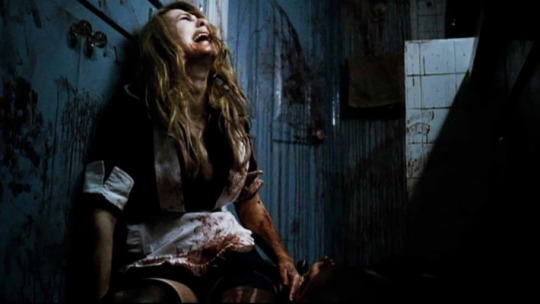
Naturally, Laurie’s story is the weakest part of a movie that is otherwise so focused on male experience. That is, the experience of needing a father, the ambivalent and ambiguous craving for maternal intimacy, the trauma of having your masculinity impugned by your (fag-obsessed) peers, and perhaps even the undermining influence of academia and capitalism on a man’s natural-born strength and worth. When the newly-freed Michael Myers storms through a truck stop to begin his pilgrimage to Haddonfield, and Rob Zombie chooses to accompany this scene with Rush’s regal outlaw anthem “Tom Sawyer”, it tells you everything you need to know about this take on HALLOWEEN. Like the rampaging Firefly family in DEVIL’S REJECTS, Michael is certainly evil, but he also represents something essential about the formation of and reinforcement of one’s individuality in the face of castrating societal norms--something the carnies among whom Rob Zombie grew up would have found very relatable.
It’s worth noting here that, while the sexuality of the women in Michael’s life plays a role in his distorted development, he is not reacting to their sexuality in and of itself. Michael Myers is not driven by the kind of covetousness that we associate with the archetypal slasher, who gives sexually frustrated male viewers a vicarious thrill by punishing sluts and teases. Michael’s problem is that his mother and sister’s sexuality contributes to his isolation. His classmates use his mother’s profession against him, and that profession keeps her from being able to tuck him in at night. Similarly, Michael doesn’t get to enjoy Halloween with his family and the other neighborhood kids, because his sister is too busy getting laid. Michael is abandoned, even while he still has a home to return to, an outsider even in his own house.

This leads me to an important point about why the portion of the movie that is devoted to Laurie's struggle is so ineffective. It is a flaw in the film, but a virtue of the director: Normal, attractive teenagers are not Rob Zombie’s people. He doesn’t even participate in traditional slasher movie misogyny, he’s so far away from thinking about them. His movies are full of badass women who are fully possessed of their sexuality, and who wield it like a weapon against hypocrites and assholes, and this is always shone in a heroic light. Moreover, he delights in casting women of all shapes and ages, often assigning them immense personal power, as in LORDS OF SALEM, an enormously satisfying movie about society’s original persecuted outcasts: witches. Rob Zombie is deeply committed to outsiders, and his definition of them isn’t limited to banal lawbreaking--he also rejects conventional beauty and our cultural obsession with youth. His films are populated by all manner of human beings, and the farther away they are from looking like model material, the more likely it is that they’re meant to be the heroes. On that note, whatever you think of his movies, you have to acknowledge that they are almost never dehumanizing. Zombie is an accomplished actor’s director who gets a full spectrum of emotion out of his performers, and who excels at creating a feeling of camaraderie within his ensemble casts. It is this surprising sweetness, and compassion even for the victims of the villains he lionizes, that makes HALLOWEEN II so peculiarly effective.
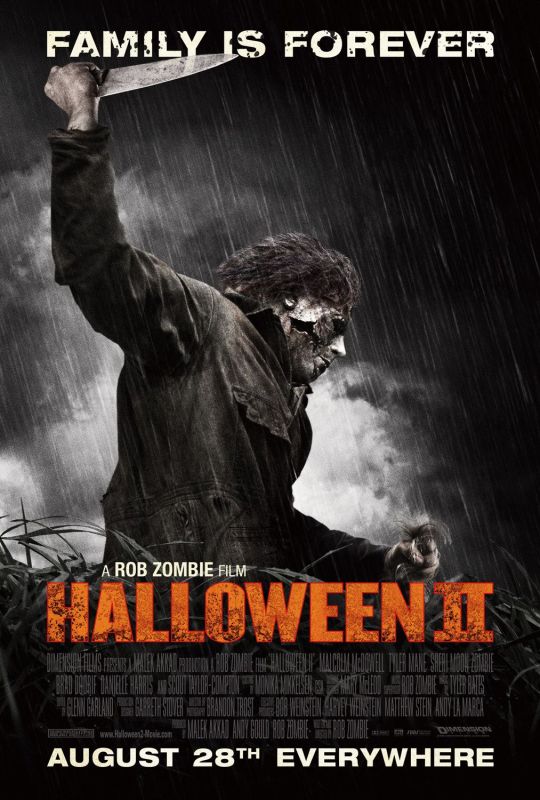
If 2007′s HALLOWEEN was a remake on which Rob Zombie couldn’t resist draping some of his personal hangups, HALLOWEEN II is almost a completely original and separate entity from what one thinks of as the franchise started by John Carpenter. In it, Michael Myers is presumed dead but his body is missing--and indeed, his character is missing for much of the movie. We find a disturbed, scarred-up Laurie Strode living with her surviving friend Annie, and Annie’s father, Sheriff Bracket. Laurie is dealing, poorly, with a heavy dose of PTSD. Along with nightmares and flashbacks, she also has trouble just being nice to people, or accepting affection. Annie and her father’s attempts to be charitable with their adoptive family member are no match for Laurie’s increasing surliness and mistrust of the world. Once a good-natured and optimistic young woman, her appearance becomes vagrant-like (curiously similar to Rob Zombie’s own casual look), her attitude is more and more nihilistic, and she develops a drinking problem. I’ve always wanted to see a movie with a slasher-like narrative foundation, but that focuses on aftermath and recovery, and recent gimmicky efforts like FINAL GIRL and LAST GIRL STANDING did absolutely nothing for me. HALLOWEEN II--at least, the superbly-acted Strode part of it--is the movie I’ve been asking for.
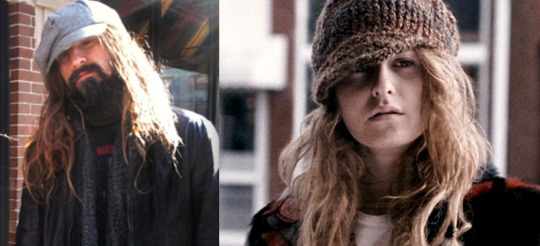
The other part of the movie is also interesting--or more specifically, it’s as ballsy as it is flawed. The movie gets off on kind of a bad foot when a title card quotes an obscure psychology text book called The Subconscious Psychosis of Dreams:
WHITE HORSE - instinct, purity, and the drive of the physical body to release powerful and emotional forces, like rage with ensuing chaos and destruction.
This is the excuse we have for the fact that the ghost of Deborah Myers arrives with a white horse to compel her son to find his sister Laurie Strode, aka Angel Myers, to reunite their family, presumably in the afterlife. Deborah Myers is kind of a spectral cross between Glenda the Good Witch and the Wicked Witch of the West, at once welcoming and sinister, drifting in and out of Michael’s consciousness in the company of a sort of ghost of his childhood (Chase White Vaneck, who is no Daeg Faerch honestly). It might be easy to dismiss this anomaly as an expression of Michael’s mental illness, and his desire to experience an idealized version of his youth in which his mother still looks after him--except that later in the movie, during the final standoff, Laurie is shown to be physically affected by these spirits. Maybe the implication is that she and Michael suffer the same psychological ailments, but for them to share such specific hallucinations without speaking is borderline supernatural in and of itself. So, while Sheri Moon Zombie does her best with her impressive force of personality and compelling physical presence, it’s hard to say what this part of the movie serves. When I first saw the film, I was completely outraged by this, not only because it made no sense to me, but because it felt like a cheap ripoff of Sarah Palmer’s similar prophetic visions of a white horse in Twin Peaks. That was all I managed to make of it.

Today, I still don’t love it, but I have more trouble faulting Rob Zombie for trying to make HALLOWEEN his own, something more than a remake. He also does this by truly letting go of the Shape. The famous William Shatner mask was blown in half by Laurie at the end of the 2007 HALLOWEEN, and scarcely makes much of an appearance in this movie. Michael Myers is a disheveled drifter, literally haunted by his past, whose only real aim is to find a place to belong. It’s sort of funny, in retrospect: When John Carpenter made the first HALLOWEEN, he-by-way-of-Dr. Loomis declared Michael an empty shell of a person, someone who was simply born evil, as reflected by the empty-eyed mask he wears. For some reason, though, a whole legacy of directors just couldn’t resist trying to explain Myers away. The original HALLOWEEN II then says, “Well...what if Michael Myers is on a rampage because LAURIE STRODE IS HIS SISTER? What’s that you say? Why is that a reason to rampage? Ummmm...” And then HALLOWEEN 4 sees him pursuing other young female relations of his, and then in subsequent movies there’s an accursed rune, and druids, and immortality rites, and by the time you get to HALLOWEEN 6 you have this absurd stone soup of bad ideas. It’s a miracle that this franchise became such a thing. Rob Zombie makes the same fundamental mistake, but at least he tries it in the simplest possible way, asserting plainly that Nurture, not Nature, made Michael into a killer. Now, terminally lonely, he’s like a clown waking up in his trailer to find that the carnival left without him. Exiled from mainstream society, he seeks out what remains of his family, who, due to his own violent actions, has grown up more like him than he may have imagined.
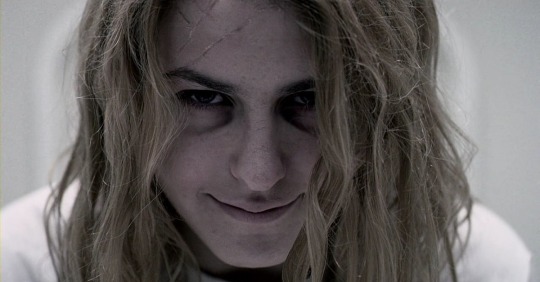
I’m not saying I think this was the best thing to do with HALLOWEEN 2. Personally, what I crave in horror movies is something that is farther beyond explanation than this--something that gesturally resembles my life experience, but that plunges past the veil of mundanity into a deeper, darker world of primordial fears and urges, addressing things that unsettle me because I cannot rationalize them. For me, horror is definitionally incomprehensible, and Rob Zombie’s HALLOWEEN diptych is fundamentally sane. But, I think what I’ve discovered is that these movies are not proper horror movies, in spite of their relentless sadistic violence. They are outlaw fables, with more DNA in common with something like EASY RIDER, than with FRIDAY THE 13TH. It’s funny to watch myself coming to a compassionate understanding of these movies that are themselves about outsiders and rejects who are specifically deprived of understanding. My goal in all this was not so much to convince people of the value of these movies, which one might reject on any number of reasonable counts, but to explain to myself why I keep coming back to them. It isn’t to condescendingly heckle them, and it isn’t just because they’re often handsome-looking, or because they’re so emotionally authentic even when the narrative is less than compelling. It must be because, even when I’ve found him challenging, I can’t help seeing Rob Zombie as a person with vision, someone who heroically eschews common consensus on taste and sense-making--the consensus even among horror fans and his own cinematic heroes--in order to say what makes sense to him personally. Finally, he has begun to make sense to me, too.

#rob zombie#halloween#2007#halloween ii#2009#blogtober#remake#John Carpenter#sheri moon zombie#michael myers#laurie strode#scout taylor-compton#brad dourif#malcolm mcdowell#tyler mane#the shape#horror#slasher#outlaw culture
147 notes
·
View notes
Text
Who is Sid Haig's Wife: Susan L. Oberg Biography, Wiki, Age, Family, Net Worth, Twitter, Instagram, Facebook, Fast Facts You Need to Know
Who is Sid Haig’s Wife: Susan L. Oberg Biography, Wiki, Age, Family, Net Worth, Twitter, Instagram, Facebook, Fast Facts You Need to Know
Susan L. Oberg Biography
[tie_full_img][/tie_full_img]
Susan L. Oberg was born on September 11, 1972, in Philadelphia, Pennsylvania, USA. She is an Actress and best know as wife of late Sid Haig who is an American actor, film producer, musician and best known to horror fans for his roles in “3 From Hell” and “The Devil’s Rejects.”
BREAKING Sid Haig dead: Star of Rob Zombie’s horror movies dies…
View On WordPress
#how did sid haig die#jason of star command#sid haig cause of death#sid haig death hoax#sid haig jackie brown#sidney eddie mosesian#Susan L. Oberg#Susan L. Oberg Age#Susan L. Oberg Bio#Susan L. Oberg Biography#Susan L. Oberg Children#Susan L. Oberg Facebook#Susan L. Oberg Family#Susan L. Oberg Husband#Susan L. Oberg Instagram#Susan L. Oberg Known Fast Facts#Susan L. Oberg Net worth#Susan L. Oberg Twitter#Susan L. Oberg Wiki#Susan L. Oberg Wikipedia
0 notes